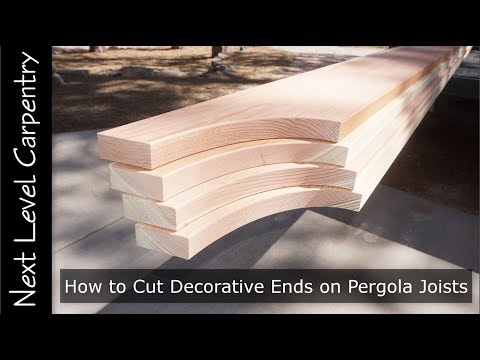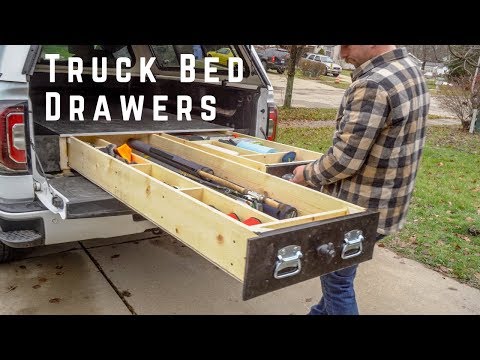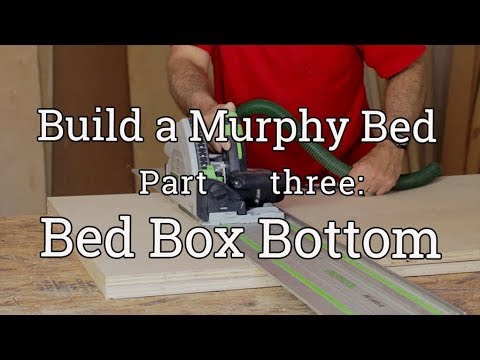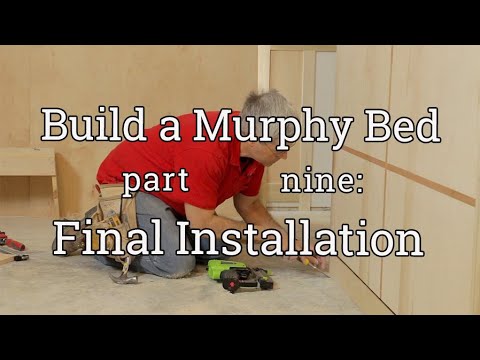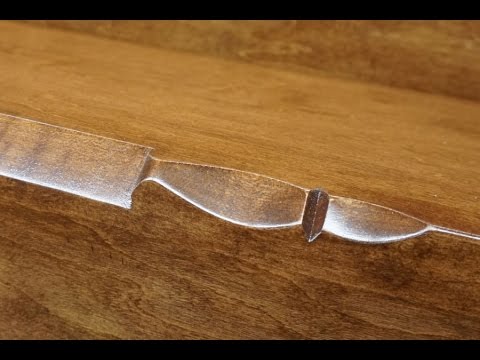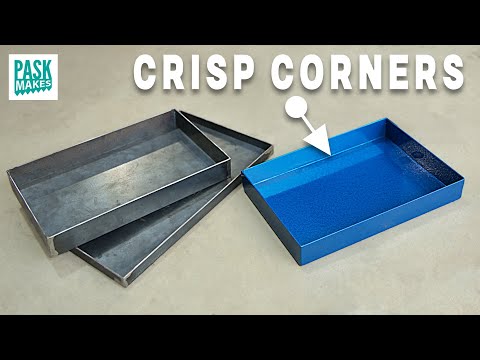Four jigs are all you need to set up a mobile cabinet shop
Official Transcript:
Hi, I'm Ron Paulk. Okay, the Smart Wood Shop. The jigs, the poor man's CNC for making the entire Smart Woods Shop, are complete. And I'm gonna give you a look at them right now. Alright.
As you know, I'm making all of my own drawers, I'm making the cubbies, and I'm also making some detailing on the drawers. There's gonna be a lot of repetition. And a lot of folks out there this day and age like CNC because they put it in the computer and then the machine starts cutting. Well, I have worked with jigs.
Why I like jigs better than CNC machines
I don't own a CNC, I have no intention of buying a CNC for a number of reasons. One, it's just another tool to support, they're expensive.
If I was gonna get one, I'd wanna get a five by 10 minimum. And most likely, I'd wanna get a dual head because I have an opportunity right now to work with a pretty big single head machine and it is slower than I am. It's tedious to watch it. And you still have to load the machine and you have to brush it off and it just doesn't seem that efficient. I think you gotta get into some real production.
01:09: Now, the advantages for cutting unique shapes or doing artwork, I know a friend of mine has a really nice one, he does some really intricate carving. No question, CNCs are the way to go if you're building up a shop. But I'm a portable shop, and I'm building houses and doing remodeling. CNCs just don't really have a place for my type of work. So I could take this sub-material into FastCap where I'm getting my benches built and use that machine, but once I build the jigs, I can make these faster than the CNC.
Plus, I rip the material to the size with a thin saw blade. The CNC's got a wider cutter and it takes more material, and so you gotta give it a little more room, so there's a little more waste.
Drawer making jigs
The jigs that I'm talking about, shown you this one before, this one cuts the drawer sides. It is set up to do the tallest one, and then it will also do the standard and the small. So they're all the same width so I will just simply lay this on top of the sides of the cabinets, and just march up and make my cuts.
Two passes on each one because I'll use a router, slightly smaller than the actual dado so I don't have to have an exact sized dado, another way to save money and be more efficient. So I've gotta pass and a pass back, and then maybe clean up and then go into the next and the next.
I don't have to think about it, I just lay it on top and make the cut, and march it up until I run out of wood to cut.
Cubbie Jigs
02:47: This jig is set up to do the cubbies. Now, these are the two cubby sizes I have. I have one that's longer and narrower, and one that is shorter and wider, so I made a single jig that will do both.
It's long enough to do the long one, it's wide enough to do the wide one, the spacing is the same. I set it up to do this longest one, but I'm gonna go ahead and add to this so it will do a full eight-foot piece of plywood.
Because these cubbies are important, there's so many things that I can do with them.
I can make these cubbies, I can make smaller ones to store saw blades, even smaller ones to do sandpaper, they are just incredibly handy. I can put them horizontally the way the cubbies in the trailer are. I can put them vertically and have the quarter-inch shelving instead of being dividers, be shelving, so there's just a lot of very creative ways these cubbies can be used and that I have used them.
03:45 RP: So like I said, I'm gonna take this jig, and you see the end one is a little bit wider than the rest. And that's just because that's where the stop is. So there's a stop on either side and one on the bottom, and it's open on the other end.
And all I have to do is lay it on there, on the narrower one, I'll just lay it along one edge tight. And what I do instead of bothering with clamping is I just drop a couple of screws, probably two or three screws in, and then I can go at it and it's not gonna move.
Pattern guides are better than pattern-cutting bits
And once you build 'em, you can use 'em over and over again, particularly because I don't use pattern cutting bits. Those are the ones that have the bearing on them. You pay for 'em, you gotta get the size you need, and you have to be very careful starting because the blade and the bearing are flush, and so you can cut your jig and mess your jig up.
04:31 RP: I use pattern guides, they're just a kit you can buy for all the sizes. And once you have a template, it doesn't matter what size you use as long as it's smaller than your cut.
So I can use a quarter-inch or a three-eighths. Well, in this case, this is a quarter-inch so I'll probably use a 3/16ths or even an eighth. But the nice thing about it is that it doesn't matter the size of the blade, it's just that they just have a size for each blade.
And it's the offset that's the difference, it's a 16th of an inch. If that's confusing, I'll show you in the shop, I've done it before but I'll show you how handy they are. And then you just buy an up-cut spiral bit, solid carbide up-cut spiral bits. They last a long time, they're inexpensive, and you don't have to have all different sized pattern bits with bearings that you've gotta maintain, it's just a much simpler way to go and the only thing is you have to do is know the offset.
We have these two jigs, which won't take me that long to build and they'll be reusable, and I'll be faster cutting than a CNC can cut, and I'll be more efficient with my material as well.
05:37 RP: The other jig and this one is just dead simple. It is this piece of half-inch or three quarter, it doesn't really matter. And all it is cut so that it is the exact width. This is the drawer bottom here and I need to cut out this notch, and that is what is gonna keep the drawer in place with those stops that I'll be gluing in.
So I just need to notch these out. I'm gonna cut 'em, I'm gonna rip all of these with a track saw and cross cut 'em, and have a stack of 'em. All the drawers are identical.
All the bottoms are the same size. So all I did was take a piece of plywood and cut it to kind of a random width here, doesn't really matter. I just wanted it wide enough to put a stop underneath. And then so the length of it is exactly the same as the drawer bottom is before the notch. And so that gives me my guidance just to flush it up.
I could've gone longer and done side clamped. And I may do that, but this just made sense because I am gonna put two screws in and make these cuts. Notch here is, again, 1/16th of an inch on both sides, bigger than the actual cut because the cutter is gonna not cut tight to that. So when I put it on here, the material will be cut a 16th of an inch away from this surface.
07:10 RP: All have to do then is take one of these, lay it on my bench, put this right on it, drop the screws in.
They'll be partially in, I'll just screw 'em in, make the cut, make the cut, unscrew it, go to the next.
Your mileage may vary, depending on your production level
It's possible that I might be able to do two or three of these at once if I stack them and flush them up nice, lay this on and use the longer up-cut spiral bit because this is an easy cut. I could probably cut two or three at the same time. So that's the jig.
Previously, I just had a small one of these, but I decided since all the drawers are the same width. I was gonna make one that is the same as the width of the drawer faces, and all I have to do is just butt it right up tight and then put a couple of screws in, and then just plunge my router in and make that cut.
These two jigs and these two jigs, four jigs, I'm gonna be able to cut the entire Smart Wood Shop with the exception of these long dados, these long ddtos here. I don't think I'm gonna bother with making a jig for these. They're long, so if I did, I'd probably make a single cut jig that I would move.
08:19 RP: And I may do that, but I have a track saw, Festool track saw, and my router has an attachment that'll ride on that. And I can just make marks, set it where I want it, clamp it down, make the cut, move it, make the cut. This is not a high production thing.
And if I were making a bunch of these level storage units I might do it, but I'm making one. So it'll take me a little longer to make these three sides. So there it is. You've seen the jigs, you know how I'm gonna do it in the shop.
And I might give you another digital update if I make any other major changes or get things fine tuned. Probably when I get the layout done I'll give you an idea of how many sheets and all that kind of stuff that I'm gonna be cutting down there. But waiting on the plywood.
I think we are ready to build this Smart Wood Shop.
I'm looking for the day that I'm gonna load all of those tools out of those toolboxes and shelves back into the Smart Shop. I need this guy up and running.
Thanks for taking the time to watch. Have a great day.
—Ron Paulk is a home builder, finish carpenter, and YouTuber in Anacortes, WA
